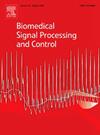Hierarchical feature modeling with data augmentation and focal loss for drug–drug interaction extraction
IF 4.9
2区 医学
Q1 ENGINEERING, BIOMEDICAL
引用次数: 0
Abstract
Drug–drug interaction (DDI) extraction is crucial for ensuring medication safety but faces challenges from complex biomedical text structures and data imbalance. To address these issues, we propose HiFAB-DDI (Hierarchical Features with Augmentation and Focal-Attention-Based Loss), a novel architecture that combines CNNs for capturing local dependencies and Transformers for modeling global contexts. Additionally, HiFAB-DDI leverages BioGPT-based data augmentation to enrich training data with diverse and domain-specific examples and incorporates an attention-enhanced focal loss mechanism to handle data imbalance effectively. Our method demonstrates state-of-the-art performance on benchmark datasets, achieving significant improvements in precision, recall, and F1 Score compared to existing approaches. Specifically, HiFAB-DDI achieves an F1 Score of 84.78%, outperforming baseline models by a significant margin. Ablation studies confirm the critical contributions of data augmentation, hierarchical modeling, and focal loss with attention. Our code and data are publicly available at: https://github.com/Hero-Legend/HiFAB-DDI.
基于数据增强和焦点损失的层叠特征模型用于药物-药物相互作用提取
药物-药物相互作用(DDI)的提取是保障药物安全的关键,但面临着复杂的生物医学文本结构和数据不平衡的挑战。为了解决这些问题,我们提出了HiFAB-DDI(分层特征与增强和基于焦点注意力的损失),这是一种新的架构,它结合了cnn来捕获局部依赖关系和transformer来建模全局上下文。此外,HiFAB-DDI利用基于biogpt的数据增强功能,通过多样化和特定领域的示例来丰富训练数据,并结合注意力增强的焦点丢失机制来有效处理数据不平衡。我们的方法在基准数据集上展示了最先进的性能,与现有方法相比,在精度、召回率和F1分数方面取得了显着提高。具体来说,HiFAB-DDI达到了84.78%的F1得分,显著优于基线模型。消融研究证实了数据增强、分层建模和注意力焦点丢失的关键贡献。我们的代码和数据可以在https://github.com/Hero-Legend/HiFAB-DDI上公开获取。
本文章由计算机程序翻译,如有差异,请以英文原文为准。
求助全文
约1分钟内获得全文
求助全文
来源期刊

Biomedical Signal Processing and Control
工程技术-工程:生物医学
CiteScore
9.80
自引率
13.70%
发文量
822
审稿时长
4 months
期刊介绍:
Biomedical Signal Processing and Control aims to provide a cross-disciplinary international forum for the interchange of information on research in the measurement and analysis of signals and images in clinical medicine and the biological sciences. Emphasis is placed on contributions dealing with the practical, applications-led research on the use of methods and devices in clinical diagnosis, patient monitoring and management.
Biomedical Signal Processing and Control reflects the main areas in which these methods are being used and developed at the interface of both engineering and clinical science. The scope of the journal is defined to include relevant review papers, technical notes, short communications and letters. Tutorial papers and special issues will also be published.
 求助内容:
求助内容: 应助结果提醒方式:
应助结果提醒方式:


